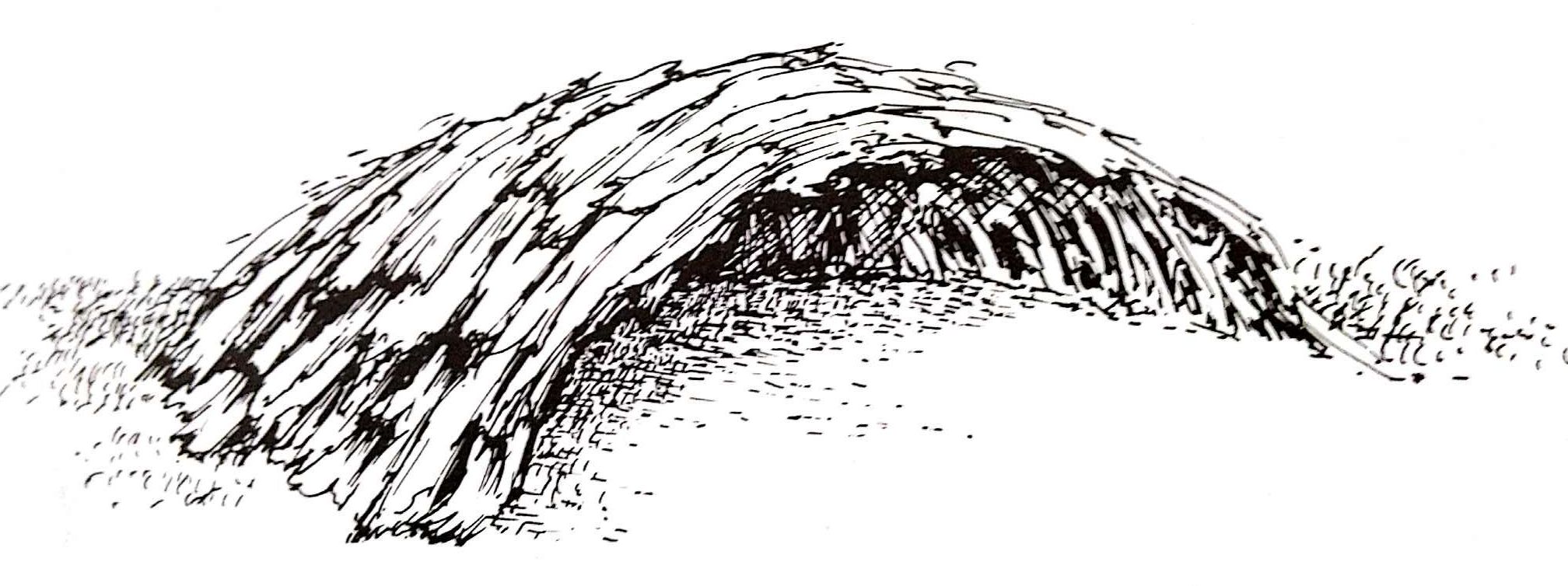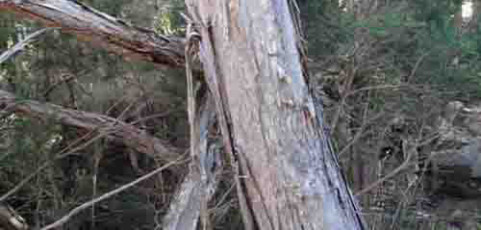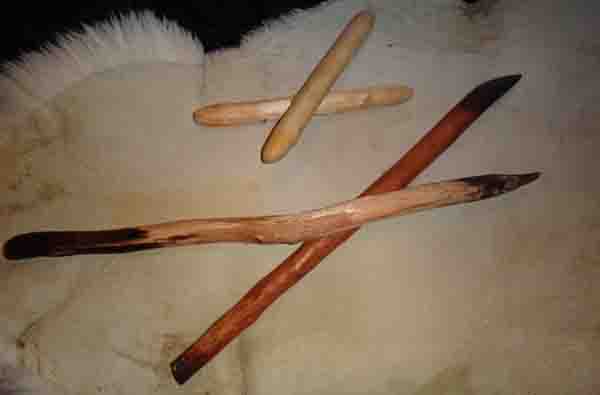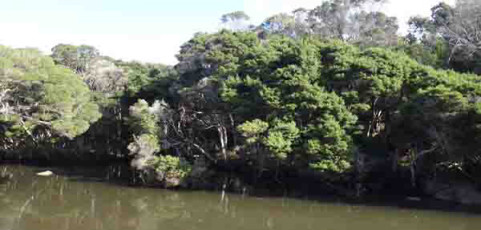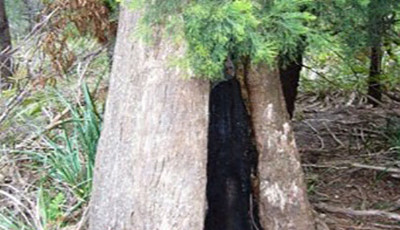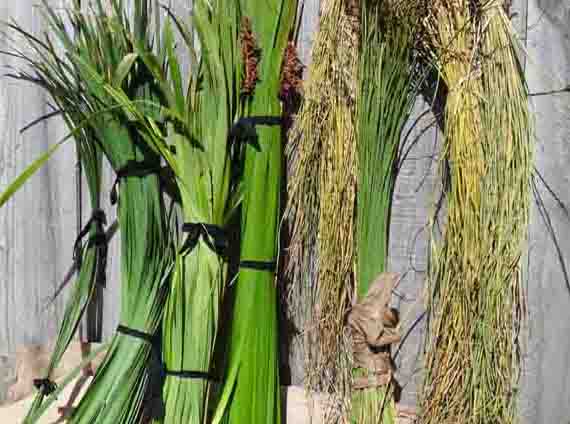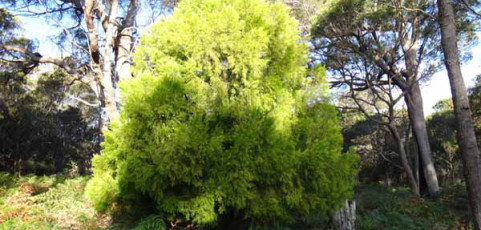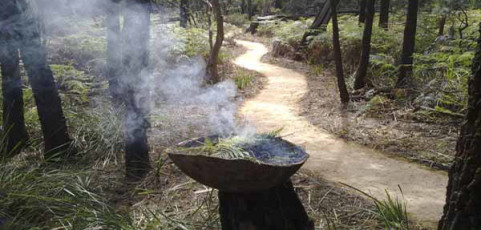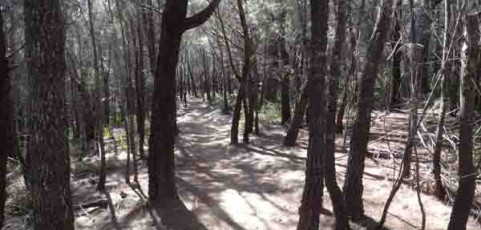Permanent sheltered living places or large half-domed bark huts were constructed from peppermint gum (kinship tree) and swamp teatrees. Sheets of bark were cut using heavy stone axes and wedges pulled off in long strips and then interwoven. The structures were made by placing boughs in the ground to form a half-domed shape. One of the largest huts with a number of hearths placed around the front, was in the lower reaches of the Great Forester...
Paperbark
Canoes were constructed from the paperbark tree which was in plentiful supply in the area. They were probably up to 5 metres long and made from thin strips of the bark tightly bound and lashed together with string for strength. Canoes were used to travel both long and short distances to the offshore islands.
Firebrand-and-Music-Sticks
Wood from dogwood and manuka was gathered to make implements and weapons. The ends were fire hardened and then made into short chisel type digging sticks, firebrands, spears, music sticks and waddis. The firebrand was carried for protection against the bad spirits as the people travelled, and for immediate use in cooking, firing the land and as well as for warmth.
Brid River
Living near or in the river systems of the Coastal Plains were a variety of animals including snakes, echidna, eels, native cat (quoll), platypus, possums, fish, burrowing and freshwater crayfish. Most of these animals comprised an important part of the leenerrerter diet.
Black peppermint
Grandfather and grandmother peppermint gum were culturally significant to the leenerrerter clanspeople both as a ceremonial tree and burial tree, and remain so for their descendants . The leenerrerter people practiced complex forms of reverence towards the remains of the dead. One practice was to place the deceased in an upright position in the burnt-out hollows of the living peppermint gum using lengths of brushwood or spears. Strips of...
Plant fibres for basket making
Read MoreThe Native Cherry
The Native Cherry (Exocarpus cupressiformis) tree is a semi-parasitic plant. It attaches to the roots of the dominant black peppermint eucalypt trees around it. It is an attractive conical shaped tree with bright green dense foliage.
Welcome to Country
“Yah Pulingina” -Welcome to Country. In respect and recognition of the leenerrerter the traditional owners of the coast and hinterlands around Bridport.
Ceremonial Ochre
Ochre was an important cultural resource for the leenerrerter . Aboriginal women obtained and prepared ochre. It was ground into a sacred powder and used for ceremonial body and tree marking. It was also mixed with grease to waterproof the body, hair and beards of the men. Present day Tasmanian Aborigines still consider ochre to be a special cultural resource. Polelerwine (red ochre) is highly prized. ...
She-oak Forest
The She-oak ( Allocasuarina littoralis ) ‘closed’ forests are remarkably quiet. It is the most drought resistant tree in Tasmania. The needle like foliage is a dull dark grey. The fallen needles create a soft cushioning mat. The nut of the she-oak is also an important cultural resource for the Aboriginal people.

